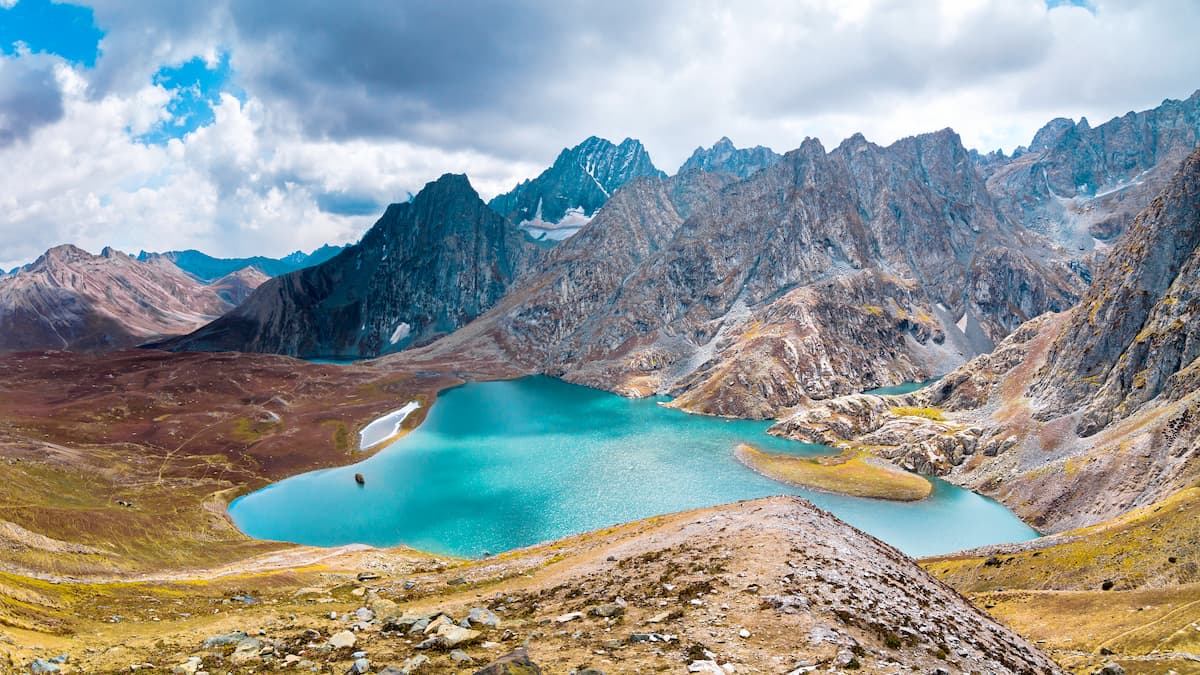

Jammu, the winter capital of the Union Territory of Jammu and Kashmir in northern India, is a region of immense historical, cultural, and religious significance, nestled in the foothills of the majestic Himalayas along the banks of the Tawi River. Known as the "City of Temples," Jammu has been a spiritual epicenter for centuries, housing the revered Vaishno Devi shrine in the Trikuta Hills, one of the most visited Hindu pilgrimage destinations in the country, drawing millions annually. The city is steeped in a rich historical legacy dating back to ancient times, believed to have been founded by Raja Jambulochan, and has witnessed the rise and fall of numerous dynasties including the Mauryas, Kushans, Guptas, and later the Dogra rulers, whose legacy is still visible in architectural marvels like the Mubarak Mandi Palace and the Bahu Fort. The cultural tapestry of Jammu is vibrant and diverse, blending Dogra, Punjabi, Kashmiri, and Pahari influences, reflected in its festivals, music, dance, and cuisine, where dishes like rajma chawal, kalari cheese, and kulthi are cherished local specialties. Jammu's strategic location has historically made it a gateway to the Kashmir Valley and an important trade and military post, while also playing a key role in the socio-political dynamics of the region, especially post-independence during the accession of Jammu and Kashmir to India. The region’s natural beauty is characterized by lush forests, rolling hills, and serene rivers, offering scenic destinations like Patnitop, Mansar Lake, and Surinsar, which attract tourists and nature lovers alike. The people of Jammu are known for their warmth, resilience, and strong cultural identity, with Dogri being the dominant language spoken alongside Hindi, Urdu, Punjabi, and English. Jammu also serves as a critical administrative, educational, and economic hub in the Union Territory, with institutions like the University of Jammu contributing to regional advancement. Despite political tensions and the complexities arising from the broader Kashmir issue, Jammu has remained relatively peaceful and continues to foster communal harmony among its diverse communities of Hindus, Muslims, Sikhs, and Christians. In recent years, infrastructure development, tourism initiatives, and improved connectivity through railways, highways, and the Jammu Airport have enhanced its role as both a pilgrimage center and a growing urban hub. The city boasts religious landmarks beyond Vaishno Devi, such as the Ranbireshwar Temple, Raghunath Temple, and Peer Kho Cave Temple, each echoing centuries of devotion and history. Art and craft traditions like Basohli painting and pashmina weaving, along with local festivals like Lohri, Baisakhi, and Navratri, add vibrancy to the region’s cultural calendar. The influence of the Dogra dynasty is deeply embedded in the city’s ethos, and their contributions to art, architecture, and governance are honored in museums and historical narratives. Jammu's topography, which transitions from the Shivalik hills to the Pir Panjal range, supports diverse flora and fauna, protected in reserves like Nandini Wildlife Sanctuary. As the region transitions into a phase of modernization and investment post the abrogation of Article 370 in 2019, Jammu is poised for greater integration with national development goals while striving to preserve its unique identity rooted in tradition, faith, and heritage. This juxtaposition of the ancient and the evolving, the spiritual and the strategic, the serene and the strong, makes Jammu not just a geographical entity but a living tapestry of India's northern frontier, where history, culture, and devotion converge in a timeless embrace.
The best time to visit Jammu is from September to April, when the weather is pleasant. Winters (November to February) are ideal for cool weather and clear views.
Key attractions include Vaishno Devi Temple (in nearby Katra), Raghunath Temple, Bahu Fort, Bagh-e-Bahu, Ranbireshwar Temple, and the Mubarak Mandi Palace.
Activities include pilgrimage to Vaishno Devi, exploring temples and forts, nature walks along the Tawi River, shopping for dry fruits and handicrafts, and local food tasting.
Jammu is accessible by air (Jammu Airport), train (Jammu Tawi Railway Station), and road. It’s well-connected to major cities like Delhi, Amritsar, and Srinagar.
Jammu has a variety of accommodations including hotels, budget lodges, and religious guesthouses. Katra (for Vaishno Devi pilgrims) offers a wide range of stays too.
No permits are required for Indian or foreign tourists to visit Jammu. However, permits are needed for certain border areas or for visiting Ladakh via certain routes.
Jammu cuisine includes rajma chawal, kalaadi cheese, patisa, and traditional Dogri dishes. Street food and North Indian meals are widely available as well.
Carry your basic medicines, stay hydrated, and dress appropriately for the weather. During pilgrimage season, expect long walks and bring suitable footwear.
Yes, Jammu is generally safe for tourists. It is one of the more stable regions in Jammu & Kashmir. Still, always follow local advisories and avoid sensitive border zones.
The currency is Indian Rupee (INR). While digital payments are common in the city, it’s advisable to carry some cash for markets and smaller towns or pilgrimage routes.
Local transport includes auto-rickshaws, taxis, and buses. For Katra and other nearby towns, shared cabs and buses are available from Jammu city.
Pack according to the season — light clothes for warm weather, warm layers for winter, comfortable shoes (especially for pilgrims), and personal medication.